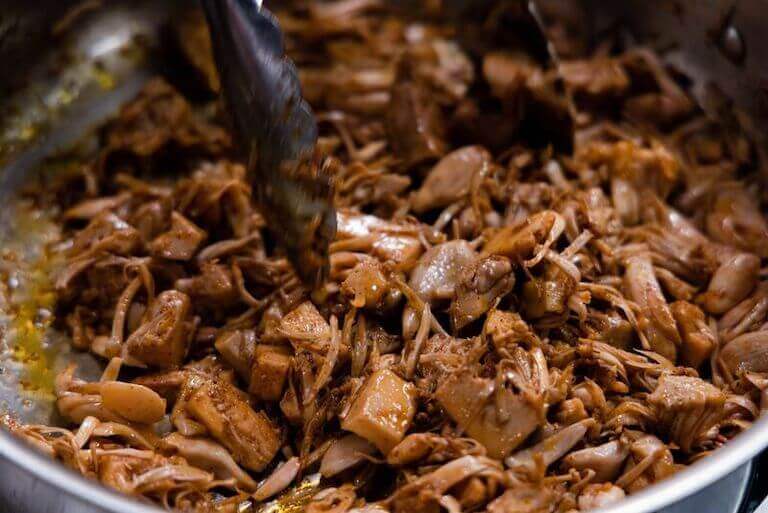Just ten years ago, dining out as a plant-based eater wasn’t always an enjoyable experience. While your omnivores chowed down on burgers and pork tenderloin, those seeking plant-based dishes often had to choose between a lackluster salad or a smattering of vegetable sides.
Fortunately, things have changed.
Today, both vegan and plant-based restaurants are popping up around the world, and restaurants of all types are adding plant-based dishes to their menus. But as with most endeavors, restaurateurs and chefs have learned there’s a right and wrong way to go about the noble pursuit of increasing plant-based menu offerings.
The Rise of Plant-Based Eating
While restaurants are often the birthplace of new cooking techniques and creative ingredient pairings, plant-based eating has ballooned outside of the restaurant world. As consumers looked to decrease their consumption of animal products, they sought out products like oat milk, plant-based burgers, and vegan cupcakes that could fulfill their cravings.
As a result, the sale of plant-based foods grew by 54% from 2018-2021. And this growth isn’t expected to slow anytime soon. Experts predict plant-based alternative sales will grow from $29.4 billion in 2020 to $162 billion in 2030.
While many think this increase is led by vegans, all kinds of eaters are opting for plant-based meals! Over half of US consumers report they eat a meat-free meal at least once a week.
What Are the Differences Between Vegetarian, Vegan, and Plant-Based?
While these three diets often get lumped together, each has a unique definition.
- Vegetarian: A diet that includes no meat, but may include animal products like milk and eggs
- Vegan: A diet that includes no animal products, including meat, eggs, dairy, and honey
- Plant-Based: A diet that prioritizes plant-based ingredients like vegetables, grains, and nuts; may or may not include animal products
Plant-Based Dishes Hit Restaurants Around the World
Many restaurants that used to serve mainly meat-packed dishes are recognizing the benefits of offering at least a few meatless entrees. At the same time, chefs are catching onto consumer demand for more whole foods like vegetables, whole grains, and fruits…resulting in menu items like veggie-studded quinoa bowls and pot pie featuring mushrooms rather than chicken.
Other chefs are turning their entire menu plant-based, and making animal products a flavoring agent rather than the focus of the menu. And an increasing number of restaurants are rolling out entirely vegetarian or vegan menus. These include Modern Love, where Chef Isa Chandra Moskowitz churns out vegan comfort food, and the vegetable-centric Vedge.

Even meat-centric barbeque dishes can be made plant-based with the help of ingredients like jackfruit
Offering Plant-Based Options Wisely
Some plant-based restaurants are proving that connecting plant-based menus with the local environment can lead to success. Chef Ricky Saward and other members of Seven Swans in Frankfurt source many of their ingredients from local farms and forests. By utilizing ingredients like juniper berries, magnolia blossoms, potatoes, and plums, Seven Swans creates dishes that have garnered the establishment a Michelin Star.

Seasonal cooking means serving dishes like sweet potato gnocchi in the fall
This points to the importance of chefs having a connection to where their food comes from. If chefs don’t know who is growing the ingredients in their dishes, they should at least know what’s in season so they can select local and flavorful ones. For Escoffier students preparing to become chefs, the Farm to Table Experience allows them to connect with local farmers and food producers, potentially planting the seed that could allow a lifetime of local and sustainable sourcing.
“[Sustainability] was a big part of why I was vegan. It was about understanding where our food comes from, understanding the vibrancy of our food when it is in season, and also understanding that food isn’t always sustainable. We don’t always talk about it that way, because we’re in a culture where food is accessible all the time for most of us. But that is not the case for everyone.”*
Stephanie Michalak White, Director of Education
How to Succeed in a Plant-Based Restaurant
It’s hard to lay out one blueprint for all plant-based restaurants to follow. Especially when these restaurants range from fine-dining establishments to fast-casual lunch spots. But if one thing’s true, it’s that the food still matters. While diners may enter a restaurant for its plant-based menu, they are unlikely to return if their meal was anything short of delicious.

Plant-based chefs can elevate vegetables into dishes like this roasted cauliflower with tahini sauce by Escoffier Plant-Based Culinary Arts student Bree C.
It is possible to churn out excellent plant-based dishes with a background in general culinary arts. However, understanding how to identify and work with ingredients and techniques specific to plant-based cooking can really give chefs a leg up, especially if they dream of becoming a vegan chef.
For example, it can be helpful to know how to create a creamy vegan “cheese” from cashews and nutritional yeast, and understand how the texture varies between grains like farro, rye, and spelt.
A plant-based culinary school like Escoffier introduces students to culinary fundamentals and also dives into techniques and skills that are specific to plant-based cooking. Students can also explore concepts like menu design and entrepreneurship, which may come in handy if they decide they wish to open their own plant-based restaurant.
“In this course, you can learn a lot of skills you may need in the future. You can not only learn your recipes, but also the skills you can use in life.”*
Maria Rodriguez, Plant-Based Culinary Arts Student
Want to Open Your Own Plant-Based Restaurant?
There’s no doubt that interest in plant-based food is growing. Still, history has shown that plant-based restaurants and individual dishes can still fail. If you’re interested in incorporating plant-based dishes into your restaurant, the more knowledge and skills you can obtain, the better.
One way you can potentially improve your understanding of plant-based cooking is by enrolling in a culinary school specifically designed for those interested in plant-based cuisine. Escoffier’s program introduces Plant-Based Culinary Arts students to topics including recipe modification, global cuisine, plant-based wellness, and more.
To explore if this program could reach your goals, contact us today.
To learn more about how to start or advance your culinary career, check out these articles:
- Gen Z Is Shaping Modern Food Trends
- Vegan vs. Plant-Based: Why Chefs Need to Know the Difference
- What Exactly Is a Plant-Based Diet and Is it Right for You?
*Information may not reflect every student’s experience. Results and outcomes may be based on several factors, such as geographical region or previous experience.

 “[Sustainability] was a big part of why I was vegan. It was about understanding where our food comes from, understanding the vibrancy of our food when it is in season, and also understanding that food isn’t always sustainable. We don’t always talk about it that way, because we’re in a culture where food is accessible all the time for most of us. But that is not the case for everyone.”*
“[Sustainability] was a big part of why I was vegan. It was about understanding where our food comes from, understanding the vibrancy of our food when it is in season, and also understanding that food isn’t always sustainable. We don’t always talk about it that way, because we’re in a culture where food is accessible all the time for most of us. But that is not the case for everyone.”* “In this course, you can learn a lot of skills you may need in the future. You can not only learn your recipes, but also the skills you can use in life.”*
“In this course, you can learn a lot of skills you may need in the future. You can not only learn your recipes, but also the skills you can use in life.”*